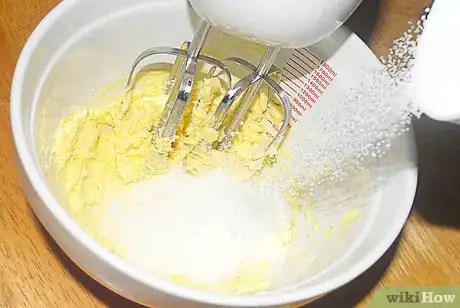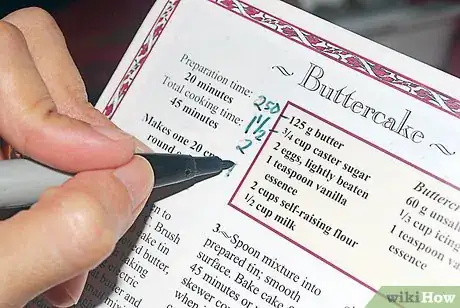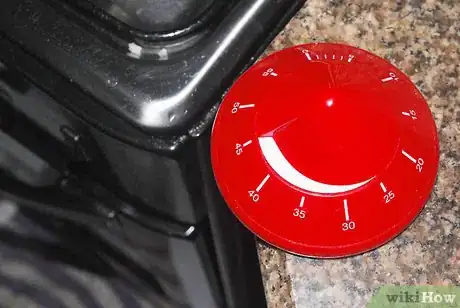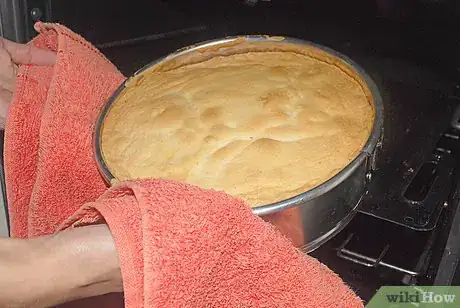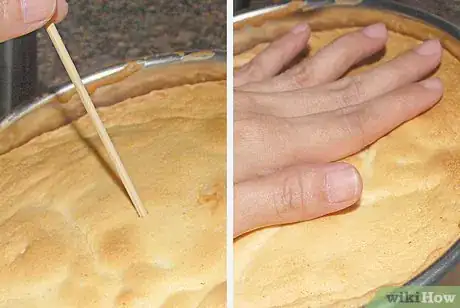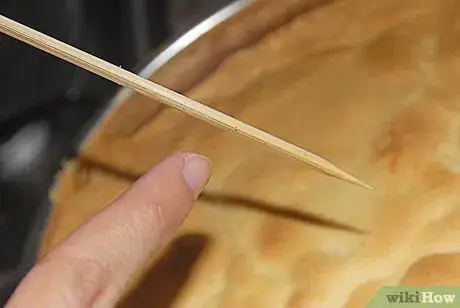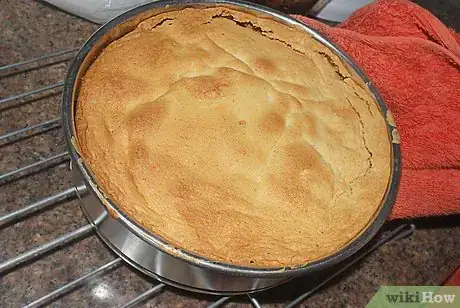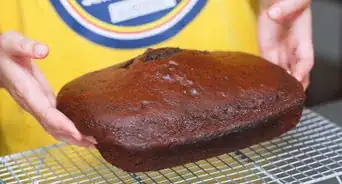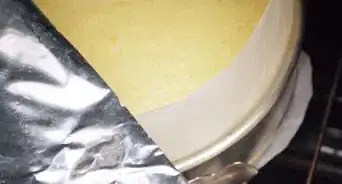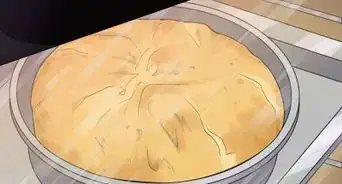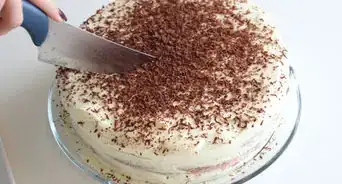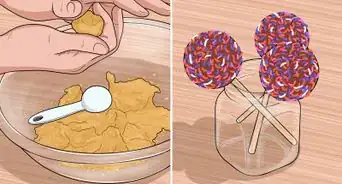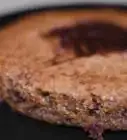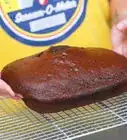X
wikiHow is a “wiki,” similar to Wikipedia, which means that many of our articles are co-written by multiple authors. To create this article, 15 people, some anonymous, worked to edit and improve it over time.
This article has been viewed 249,893 times.
Learn more...
Testing whether or not a cake has been properly cooked is important for avoiding a broken, runny raw or overcooked cake. Knowing how to test the cake will ensure that you cook it to perfection each and every time.
Steps
-
1Follow the cake recipe carefully. If you follow the recipe properly and use the cooking temperatures and times it has suggested, you have a greater chance of the cake being ready when the recipe says it should be. However, in reality, we all have different oven types (convection ovens change cooking times) and often we make substitutions to cakes that change the essence of the recipe and can alter the cooking times. So, it is handy to know how to test a cake for readiness.[1]
-
2Keep these "rules of substitution" in mind when working out the readiness of a cake:[2]
- For a cake that you have substituted wet ingredients for dry (for instance, adding berries, fruit pieces, honey etc.), the cooking time will be longer.
- For a cake that you have doubled or tripled the ingredients, the cake will need to cook for a longer time and at a lower temperature.
Advertisement -
3Wait before opening the oven door. One of the major errors in making a cake is to open the oven too soon and have the cake sink on you because it is exposed to the temperature difference before it has had a proper chance to rise.
-
4Remove the baked cake. Use oven mitts to remove the cake from the oven.
-
5Try one of two methods to test the cake:[3]
- The implement method: Take a fork, a cocktail stick, a skewer or a toothpick. Use one of these items to poke the top of the cake slightly in the middle.
- The hand method: Take your hand and spread it out. Palm face down, gently press your clean hand on the top of the cake. A firm top that does not give way under pressure and springs back means a ready cake. If the cake gives, it must cook more. This method is tricky and should only be used by advanced cooks - the cake may sag if pressed too hard and it must be performed very quickly as the cake is hot!
-
6Check the surface of the item used to poke the cake. You will know whether or not the cake is ready by seeing:[4]
- If it comes up with some wet batter, crumbs or stickiness on it, the cake needs to bake some more.
- If it is dry, then the cake is done.
-
7Place the cake back in the oven quickly if it has not been baked adequately. Otherwise, leave your cake out to cool for 5 -10 minutes in the pan and then transfer to a rack to cool before adding frosting (icing) to the top. Or, if you cannot wait, eat some warm cake with butter - that is always delicious.[5]
Advertisement
Community Q&A
-
QuestionMy vanilla cake has been cooked for only 15 minutes and it is raw. What can I do?
 Community AnswerFifteen minutes sounds way too short for a normal sized full cake. What does your recipe suggest? It is important to follow the cooking time suggested in the recipe. In terms of what you can do, return it to the oven for at least another 10 to 20 minutes, depending on what the recipe says.
Community AnswerFifteen minutes sounds way too short for a normal sized full cake. What does your recipe suggest? It is important to follow the cooking time suggested in the recipe. In terms of what you can do, return it to the oven for at least another 10 to 20 minutes, depending on what the recipe says. -
QuestionIs it okay to return an uncooked cake to the oven?
 Community AnswerIt certainly is. That is the purpose of the test, to see whether or not it needs more time.
Community AnswerIt certainly is. That is the purpose of the test, to see whether or not it needs more time. -
QuestionWhy must I leave the cake in the pan after taking it out of the oven when it is finally baked to perfection?
 Community AnswerA cake is fragile when it is first removed from the heated cooking environment and into room temperature. It is still soft and the heat within it is dispersing moisture and keeping it weaker. As it cool down, it begins to firm up and becomes a little less moist. Leaving the cake in the pan for 5 to 10 minutes allows it to firm enough to be transferred to the wire cooling rack, where it can complete its cooling process. If you try to move it earlier, then it may well break.
Community AnswerA cake is fragile when it is first removed from the heated cooking environment and into room temperature. It is still soft and the heat within it is dispersing moisture and keeping it weaker. As it cool down, it begins to firm up and becomes a little less moist. Leaving the cake in the pan for 5 to 10 minutes allows it to firm enough to be transferred to the wire cooling rack, where it can complete its cooling process. If you try to move it earlier, then it may well break.
Advertisement
Warnings
- A cake that sinks and doesn't look so great is not a loss. Use it for trifle or pudding.⧼thumbs_response⧽
- Ovens and the things in them may be very hot. Take care where you place your hands and be careful not to brush the edges of the oven or the racks with your hands or fingers.⧼thumbs_response⧽
- Don't use a knife to test the cake because this may cause the batter to deflate and the whole cake will sink.⧼thumbs_response⧽
Advertisement
References
- ↑ https://www.bbcgoodfood.com/howto/guide/how-make-cake-top-10-tips-success
- ↑ https://www.myrecipes.com/how-to/cooking-questions/how-to-double-baking-recipe
- ↑ https://www.tasteofhome.com/article/cake-doneness-tests/
- ↑ https://www.thekitchn.com/5-ways-to-tell-when-your-cake-is-done-98927
- ↑ https://www.foodnetwork.com/recipes/articles/cakes-tips-and-techniques
- ↑ https://www.thekitchn.com/5-ways-to-tell-when-your-cake-is-done-98927
About This Article
Advertisement
